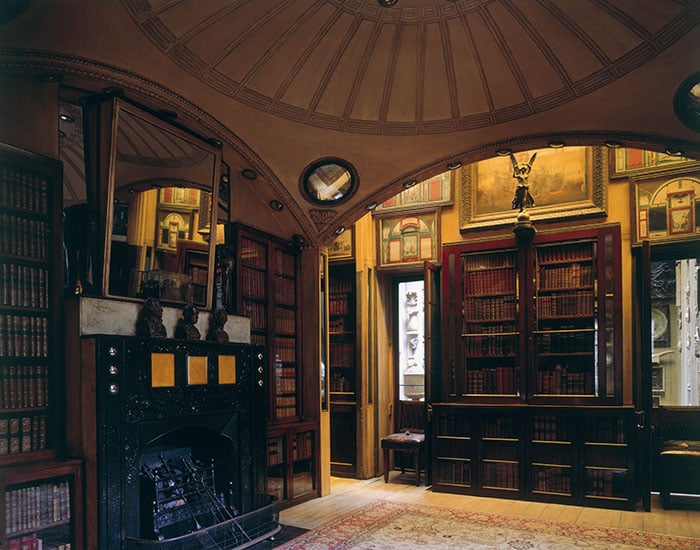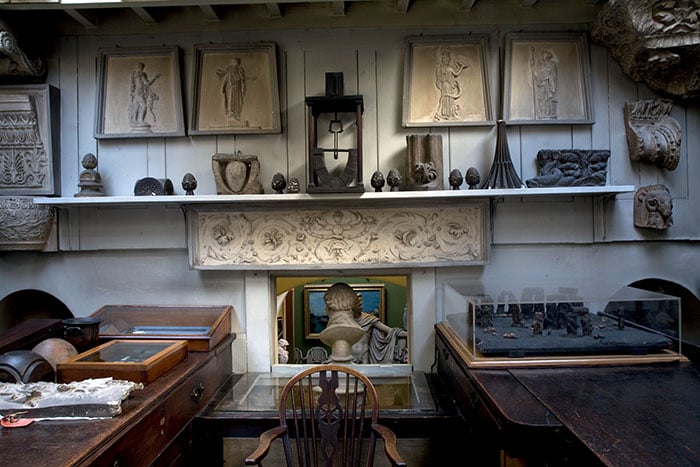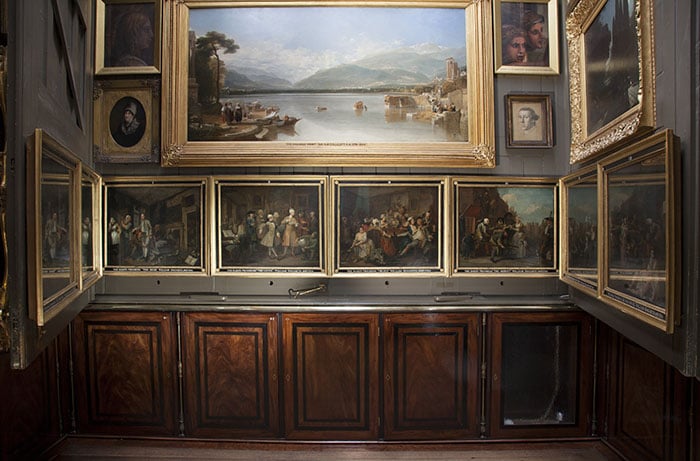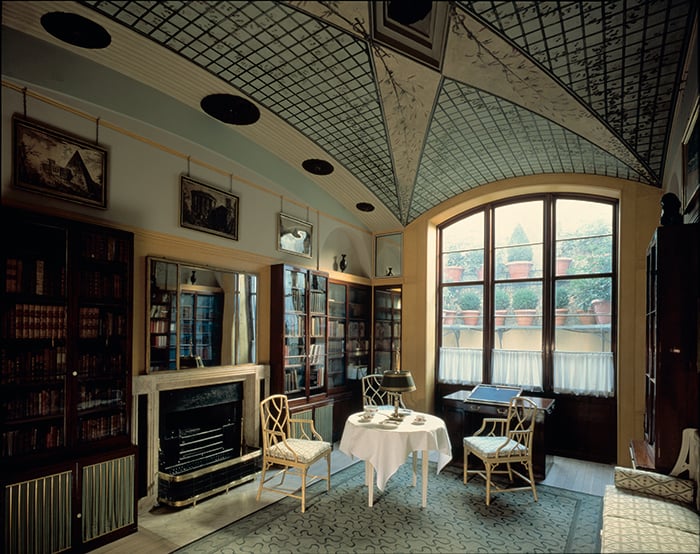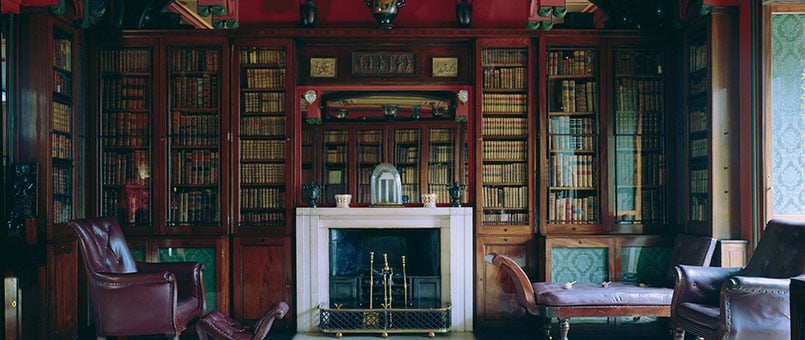
8 things you may not know about Sir John Soane’s Museum
The house-museum of Sir John Soane (1753-1837) – English architect, Royal Academician and avid collector – holds one of the most intriguing and memorable collections of painting, sculpture and architecture in the world.
Originally designed as a study resource for young architecture students, Sir John Soane’s Museum is now best loved for its surprising finds and secret spaces. Take a virtual tour of the house and discover the hidden histories within its walls.
1. The red colour of Soane’s refined Library-Drawing Room – known as Pompeii Red – was inspired by his Grand Tour between 1778-1780. A brilliant student, Soane won a travelling scholarship to Italy in 1778 from the Royal Academy. Both his insight into the excavation of the Villa Negroni in Rome, during 1778, and his trip to Pompeii the year after, had direct influences on the decorations of the interiors of his house-museum.
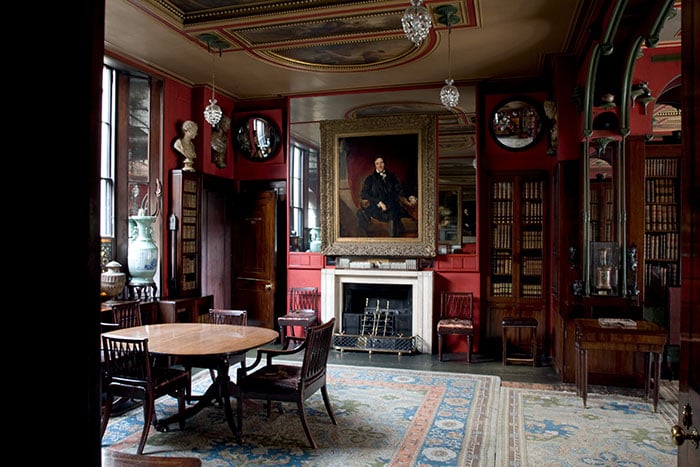
Sir Thomas Lawrence’s portrait of Soane from 1829 presides over the north end of the Library-Dining Room, Sir John Soane’s Museum, London (photo)
2. The iconic dome above the Breakfast Room was a trial version for the Bank of England. Soane often used his own house to experiment designs for his public buildings. His most famous architectural feature – a four-cornered pendentive dome with a lantern skylight – was first used in the museum’s Breakfast Room before being introduced to the (now destroyed) counting halls for The Bank of England.
3. Soane’s famous sculpture collection is filled with both genuine ancient marbles and plaster cast replicas. While Soane was a passionate collector of antiques – with objects including the sarcophagus of Egyptian Pharaoh Seti I – he considered both Classical and modern sculptures to be informative resources for architecture students.
4. Soane thought golden light, or “luminère mystérieuse”, improved the appearance of his collection. Stained-glass windows are used frequently within Soane’s house-museum to elevate his paintings and sculptures; he was also fascinated with achieving a “poetry of architecture” through the use of light, space and decoration.
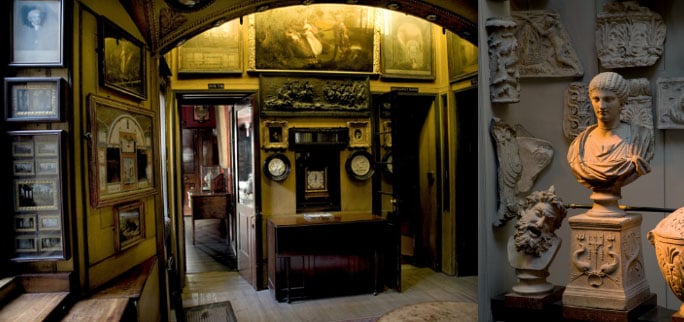
Left: The south wall of the Breakfast Room, showing Napoleonic memorabilia, Sir John Soane’s Museum
Right: A Roman bust of an elaborately coiffed woman, Sir John Soane’s Museum, London
5. Mrs. Soane purchased the first Hogarth artwork in the museum’s collection. Among the most famous paintings within Soane’s extraordinary Picture Room are two series of works by caricaturist William Hogarth. Mrs. Eliza Soane purchased the first, the famous ‘Rake’s Progress’ series (1732–33) in 1802; Soane went on to buy Hogarth’s ‘Humours of an Election’ series (1755) in 1823.
6. The museum stretches along three buildings… but not as Soane originally intended. An 1813 drawing of the proposed museum by Soane’s draftsman, Joseph Gandy, shows it extending from No.13-15 Lincoln’s Inn Fields. During Soane’s lifetime, however, he only managed to purchase No.12 (as his own private house) and No.13 (the original museum). Now, the museum covers No.12, 13 and 14, the latter purchased in 1996 as an education centre and research library. Only No.13 has the portico at the front, as Soane originally intended.
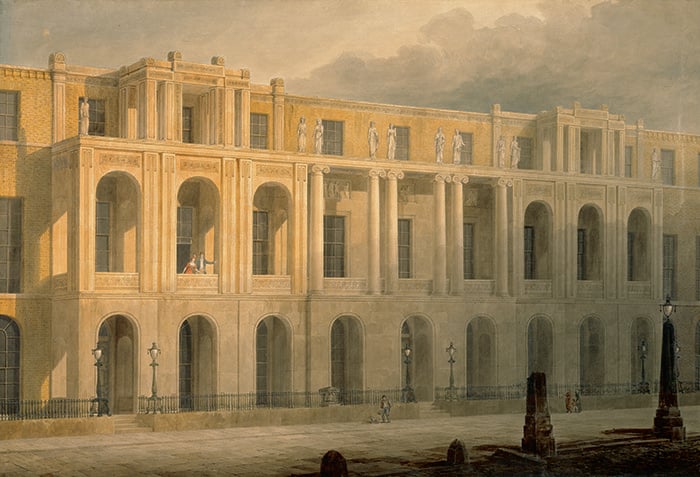
Design for an extended elevation for 13-15 Lincoln’s Inn Fields. 1813 (w/c on paper), Joseph Michael Gandy (1771-1843) / Courtesy of the Trustees of Sir John Soane’s Museum, London
7. Giovanni Piranesi may have inspired Soane’s fascination with ruins. Soane met Italian painter Piranesi during his 1778 Grand Tour. The latter’s etchings of Roman ruins and fictitious atmospheric ‘prisons’ had a direct influence on Soane’s own work. Soane designed his buildings by imagining them first as ruins; drawings of his architecture by Gandy – such as Bank of England, below left – frequently depicted ruins instead of completed buildings.
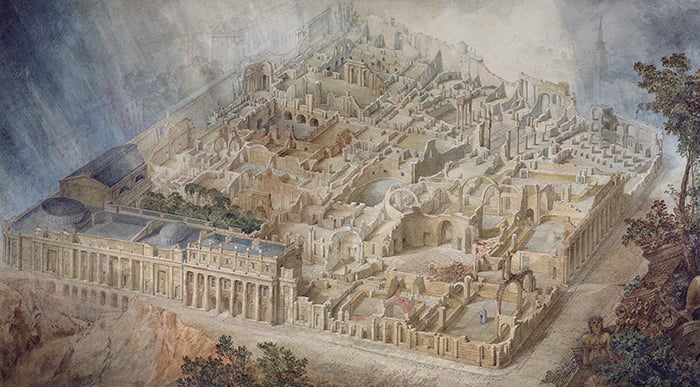
Bank of England as a Ruin, 1830, Joseph Michael Gandy (1771-1843) / © Courtesy of Trustees of Sir John Soane’s Museum, London / Bridgeman Images
8. Soane’s private house was as experimental as his museum. Soane’s own living quarters in No. 12 Lincoln’s Inn Fields, which predates the museum (No. 13 Lincoln’s Inn Fields) by 20 years, shows similar motifs that were later used for the house-museum: the private Breakfast Room, for example, also featured a curving ceiling and used reflective mirrors. After his wife’s death in 1815, Soane devoted himself to improving the museum and spent increasingly less time in his private house.
John Soane: Man vs. Myth
Soane is one of the most enigmatic architects in English architectural history. Although famous for his clean lines, simple shapes and intelligent use of lighting, many of his works were remodelling projects in existing houses and hardly any of his buildings remain as originally intended. His most famous buildings include The Bank of England (interior destroyed); Royal Chelsea Hospital (destroyed); Dulwich Picture Gallery (remodelled); Holy Trinity Church, Marylebone (disused); and Pitzhanger Manor (remodelled). Most of Soane’s architectural legacies survive in Gandy’s sensationalist watercolours of his buildings as ruins – which are, in hindsight, an irony.
Many of Soane’s architectural projects have also been overshadowed by his obsessive collecting, fantastical ideas and larger-than-life personality. In his private life, he is best known for disowning his two sons for not becoming architects and for creating a fictitious solitary monk, ‘Padre Giovanni’, as an alter ego for his loneliness after his wife’s death. For the most part, the revival in Soane’s popularity has more to do with his dramatic private life and intriguing house-museum, than any of his other buildings.
Find out more
Sir John Soane’s Museum – See more archival images from Bridgeman
Hogarth: 250 years. A Rake’s Progress – Immerse yourself in Hogarth’s famous painting series of inebriated harlots and rakish scoundrels.
All images in this article are sourced from www.bridgemanimages.com. Contact the Bridgeman sales team (uksales@bridgemanimages.com) for more information regarding licensing, reproduction and copyright issues.
Save
Save
Save
Save
Save

